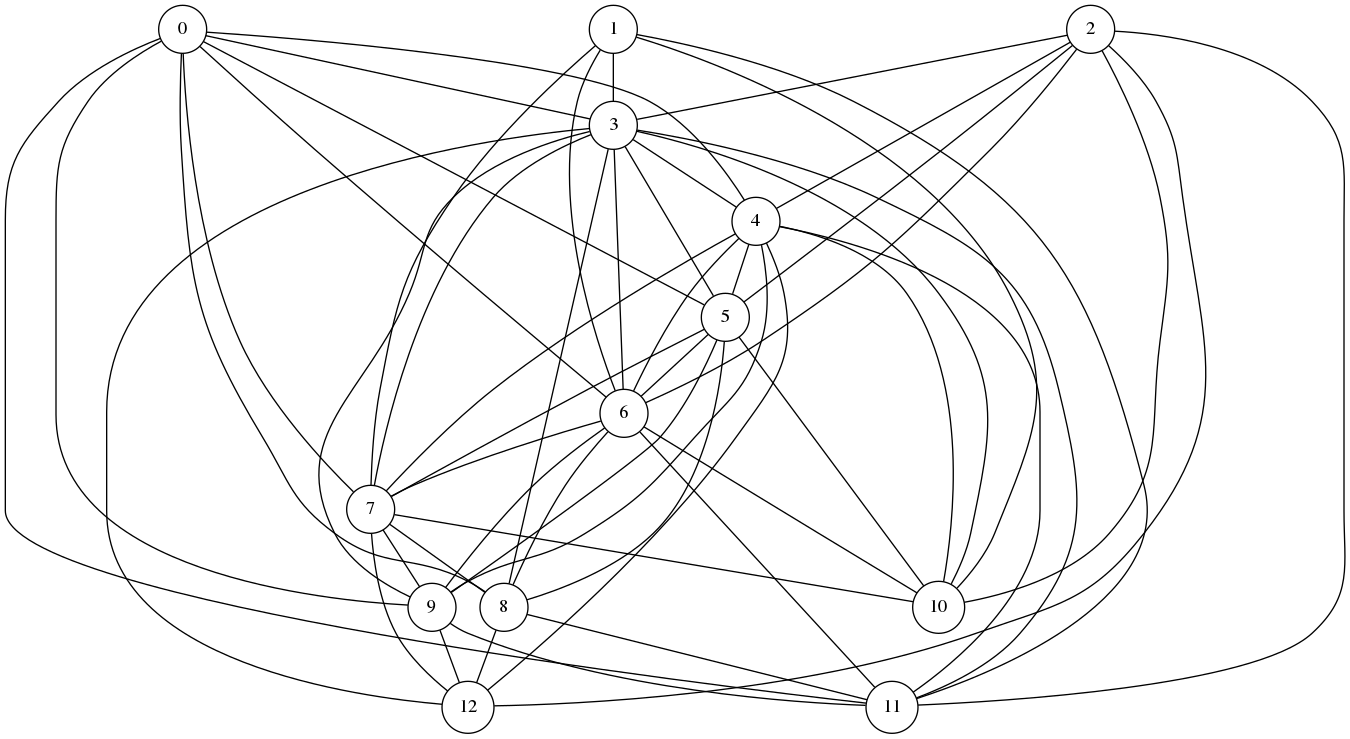Finding Cliques in a Graph
Description of the problem
Today’s post is about finding cliques in a graph: A clique in an undirected graph G is a subgraph which is complete. One specific algorithm on finding cliques is a family of algorithms called Bron-Kerbosch Algrithm(s). They were simple enough to implement.
The algorithm
Algorithm Bron-Kerbosch
Input: Three subsets of vertices P, X and R
Output: A family of cliques defined as subsets of the set of vertices
Begin
if P and X are both empty:
report R as a maximal clique
end if
for each vertex v in P:
N <- set of neighbors of v
call Bron-Kerbosch with R union {v}, P intersection N, X intersection N
P <- P \ {v}
X <- X union {v}
end for
EndAn implementation in Common Lisp
The pseudo-code of the first variation was easy enough to translate
to Common Lisp. I will assume (as I did in most of the posts on graphs
on this blog) that a graph is given as a list of edges where each edge
is a list of pairs of vertices.
(defun cliques (graph)
(let* ((vertices (remove-duplicates (reduce #'append graph)))
(neighbors
(loop for x in vertices collect
(let (res)
(dolist (v vertices (cons x (remove-duplicates (sort res #'<))))
(if (member (sort (list v x) #'<)graph :test #'equal)
(push v res))))))
(cliques nil))
(labels ((bron-kerbosch (p r x)
(if (and (null p) (null x))
(push r cliques))
(mapl (lambda (q)
(let* ((v (car q))
(n (cdr (assoc v neighbors))))
(bron-kerbosch (intersection q n)
(union (list v) r)
(intersection x n))
(setf x (cons v x))))
p)))
(bron-kerbosch vertices nil nil))
(sort (mapcar (lambda (x) (sort x #'<)) cliques)
(lambda (x y) (> (length x) (length y))))))
CLIQUESI implemented neighbors as an assoc list instead of
implementing it as a function to save time. Also, the for
loop inside the recursive core was using P with one element
removed each time. This was the perfect use case for mapl.
Let us test it on a complete graph:
(let ((G (loop for i from 0 to 9 append
(loop for j from (1+ i) to 10 collect
(list i j)))))
(cliques G))
((0 1 2 3 4 5 6 7 8 9 10))and now on a random graph:
(defun random-graph (n m k)
(remove-if
(lambda (x) (= (car x) (cadr x)))
(remove-duplicates
(sort (mapcar (lambda (x) (sort x #'<))
(loop repeat (floor m k) append
(loop repeat k collect
(list (random n) (+ (random n) k)))))
(lambda (a b) (or (< (car a) (car b)) (and (= (car a) (car b)) (< (cadr a) (cadr b))))))
:test #'equal)))
RANDOM-GRAPH
(defvar G (random-graph 10 100 3))
G
(cliques G)
((0 3 4 5 6 7 9) (3 4 5 6 7 10) (2 3 4 5 6 10) (0 3 5 6 7 8) (0 3 4 6 9 11)
(3 4 7 9 12) (2 3 4 6 11) (1 3 6 7 10) (0 3 6 8 11) (3 7 8 12) (2 3 4 12)
(1 3 6 11))